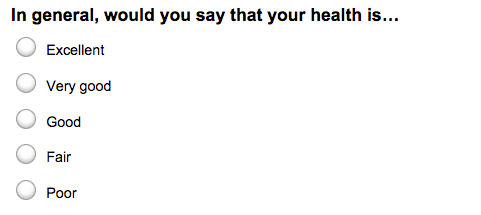Surveys are a powerful way to gather information, and also sometimes awkward, one-sided conversations. How so? Well, you’re asking people to give you answers—but not in person.
That means you can’t gauge their reaction to sensitive survey questions. So there isn’t an easy way for you to make on-the-fly adjustments to your survey, encouraging people who may be ready to quit.
But don’t despair! Because careful survey design can help you balance the equation, and get you the answers you need.
Tips for asking sensitive survey questions
Okay. So you can’t perfectly recreate what works in a hallway conversation with a colleague—where you pick up subtle cues in tone or body language about how well the conversation is going. You need to anticipate sensitivities and address possible objections in advance.
Here are 2 quick tips from our research team to ask these personal questions:
- Ask personal or sensitive questions after establishing rapport with your respondent.
- Start with questions that don’t make respondents feel vulnerable; just like in-person conversations, which don’t start with questions like, “Hi! How much do you weigh?”
For example, a new patient taking a pre-visit survey from a physician might be expecting personal and sensitive questions but may still be jarred if the survey began with the following question:

But, an introductory question would help ease the patient into answering potentially sensitive questions. For example, the survey could begin with:

The question above allows the patient to get into the mindset of thinking about health and her upcoming visit to the doctor. It initiates a conversation between the physician’s office and the patient and puts in context more sensitive questions that may follow.
In general, keep in mind the stage in the conversation when asking a question and order sensitive questions towards the end of the survey.
Make clear why you’re asking a personal or sensitive question
Consider a hospital administrator sending a survey to the hospital’s employees that includes a question about the smoking habits of employees. Out of context, the question would appear intrusive and threatening, particularly from an employer.

If the administrator had explained why this information would be helpful and limited the question to only what was necessary, the question would be received well. A better construction of the question would start with the reason for it, like:
Many employees have told us they are addicted to cigarettes. We are considering holding confidential sessions on smoking cessation. So we can properly plan, are you interested in attending one of these sessions to help you quit smoking?
For questions about age, race or other demographic characteristics that will be used only in aggregate, consider starting the question with, “For statistical purposes …” or including some other indication that the question will not be used to personally identify the person taking the survey.
Consider how asking for personally identifiable information might affect other answers on the survey
Deciding which questions to include on a survey can be an exercise in balancing priorities. A nurse manager surveying nurses in his unit values an accurate measurement of healthcare employee satisfaction but might also want to know whether Hispanic nurses feel that hospital policies adequately protect their interests in a largely White hospital.
If there were only two Hispanic nurses in the unit, any question about the respondent’s racial identity would expose one of those two employees. The race question, in effect, is a personally identifiable question and may cause those nurses in particular to report higher levels of satisfaction.
Before sending out a survey—put yourself in the shoes of your expected survey taker, consider if any of the questions might potentially identify the respondent, and think about how survey responses might differ if personal questions are included.
Finally, you should always store sensitive and personally identifiable data safely
In the healthcare context, it’s mandated by law. The Health Insurance Portability and Accountability Act of 1996 (HIPAA) put in place strict safeguards to prevent the release of personally identifiable and protected health information.
Examples of protected information under HIPAA include an individual’s social security number, health insurance beneficiary number, or even someone’s name. And SurveyMonkey is HIPAA-compliant, so you can gather information, keep the data safe, and transform your healthcare organization by using patient and employee feedback to make big changes.
Ready to build a survey that asks sensitive questions?
Now that you know how to ask sensitive questions, you're set to collect more reliable responses and keep respondents happy.




